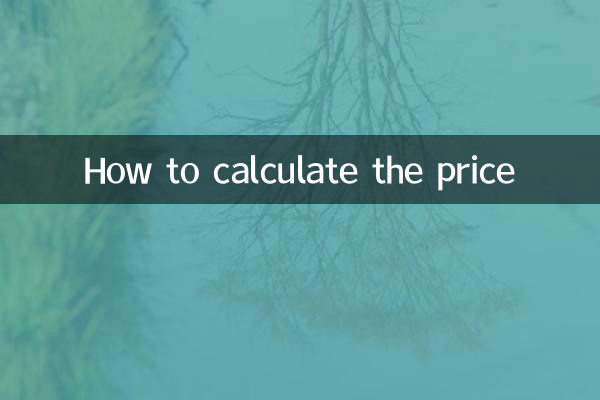How to calculate the price
In real estate, finance, commodity trading and other fields, quasi-price prices are an important reference indicator. It is often used to evaluate the reasonable value of an asset or commodity, helping buyers and sellers make smarter decisions. This article will introduce in detail the calculation method of quasi-price, and combine the popular topics and hot contents of the entire network for the past 10 days to provide you with structured data analysis.
1. What is a quasi-price?

A quasi-price refers to the reference price obtained by comparing the market transaction prices of similar assets or commodities and adjusting them with their differences. It is often used in real estate appraisal, stock valuation, commodity trading and other scenarios. The core of the quasi-price is "comparability", that is, the selected reference must have a high similarity to the target asset or commodity.
2. Calculation method of quasi-price
Calculation of a quasi-price usually includes the following steps:
1.Select a reference: To select reference objects similar to the target assets or commodities, usually 3-5 reference samples are required.
2.Collect data: Obtain the market transaction price, trading time, geographical location, specification parameters and other information of the reference object.
3.Adjust the difference: Adjust prices according to the difference between the target assets and the reference objects (such as area, floor, brand, etc.).
4.Calculate the price: The adjusted price is subjected to weighted average or other statistical processing to obtain the final quasi-price price.
Here is an example table of quasi-price calculations:
| Reference | Transaction price (10,000 yuan) | Area (㎡) | floor | Adjustment coefficient | Adjusted price (10,000 yuan) |
|---|---|---|---|---|---|
| Reference A | 500 | 100 | 5th floor | 1.05 | 525 |
| Reference B | 480 | 95 | 3 floors | 1.02 | 489.6 |
| Reference C | 520 | 105 | 8th floor | 0.98 | 509.6 |
| Comparison of price | (525+489.6+509.6)/3=5.0807 million yuan |
3. The relationship between popular topics on the entire network in the past 10 days and price comparison
Recently, the concept of quasi-price has been mentioned in many popular topics. The following are hot topics related to price comparison in the past 10 days:
| Hot Topics | Related fields | Approximate price |
|---|---|---|
| New policies on real estate regulation | real estate | The price is used to evaluate the taxes and fees of second-hand house transactions |
| Commodity price fluctuations | Commodity Trading | The reference price for futures contracts |
| Stock market valuation dispute | finance | Average price is used to evaluate the reasonable stock price of listed companies |
| New energy vehicle subsidy adjustment | Automotive Industry | The price is used to determine the subsidy benchmark |
4. Things to note when comparing the price
1.Selection of reference: The reference object must be highly comparable to the target asset, otherwise the calculation results may be distorted.
2.Rationality of adjustment coefficients: The adjustment coefficient needs to be scientifically set according to actual conditions to avoid subjective conjectures.
3.Changes in the market environment: The price is timely and needs to be adjusted dynamically according to market changes.
4.Reliability of data sources: Ensure that the transaction data used is authentic and reliable, and avoid interference from false information.
5. Summary
Qualified price is a scientific and practical valuation method that is widely used in many fields. Through reasonable selection of reference objects and adjustment of differences, a relatively accurate reference price can be obtained. In practical applications, comprehensive judgments need to be made based on the market environment and data reliability. I hope this article can provide you with valuable reference!

check the details

check the details